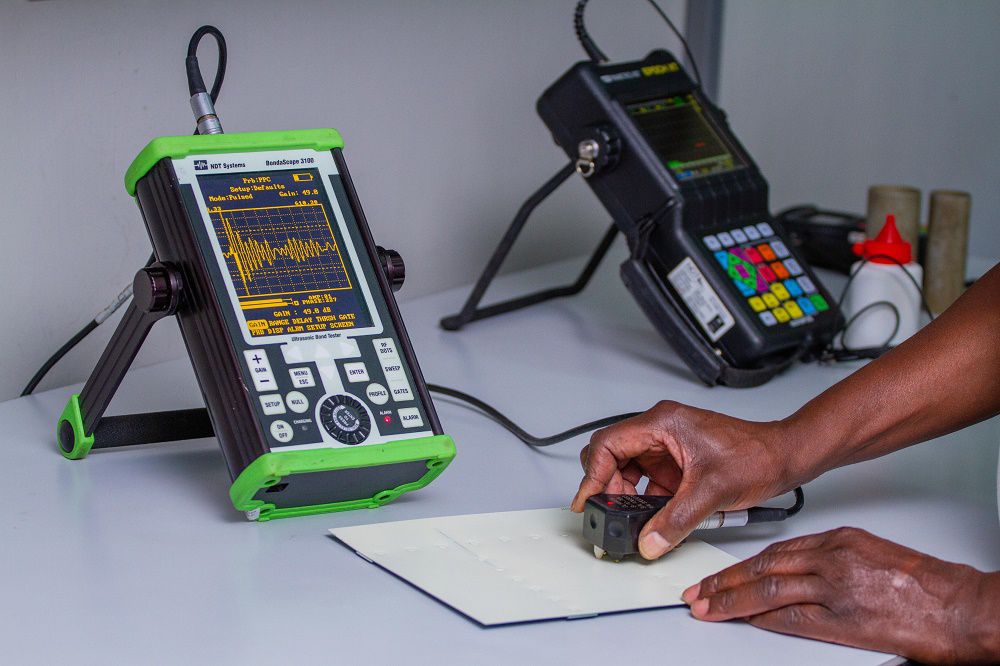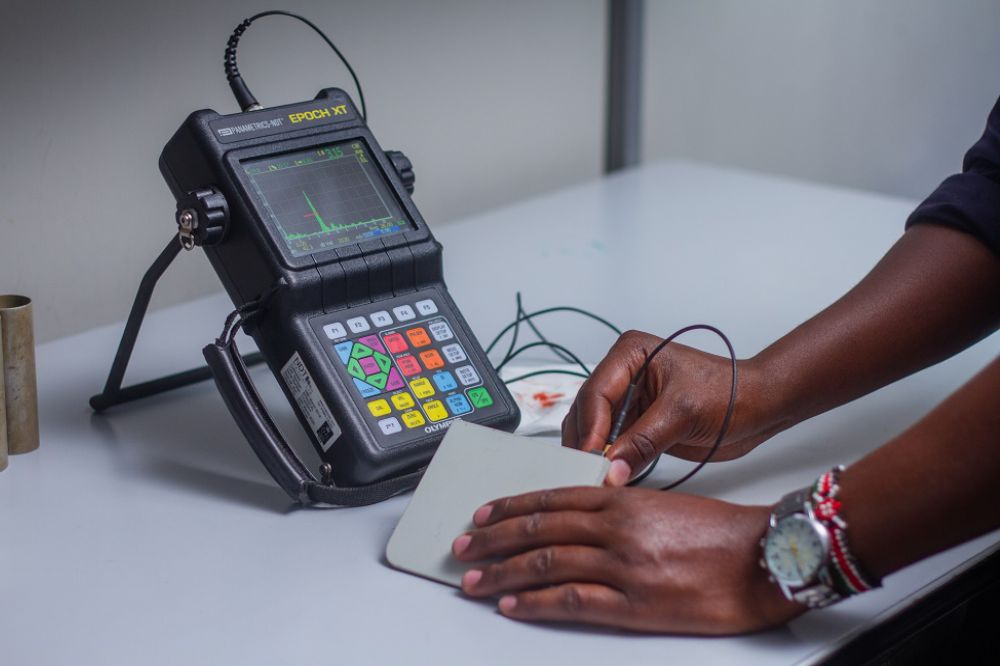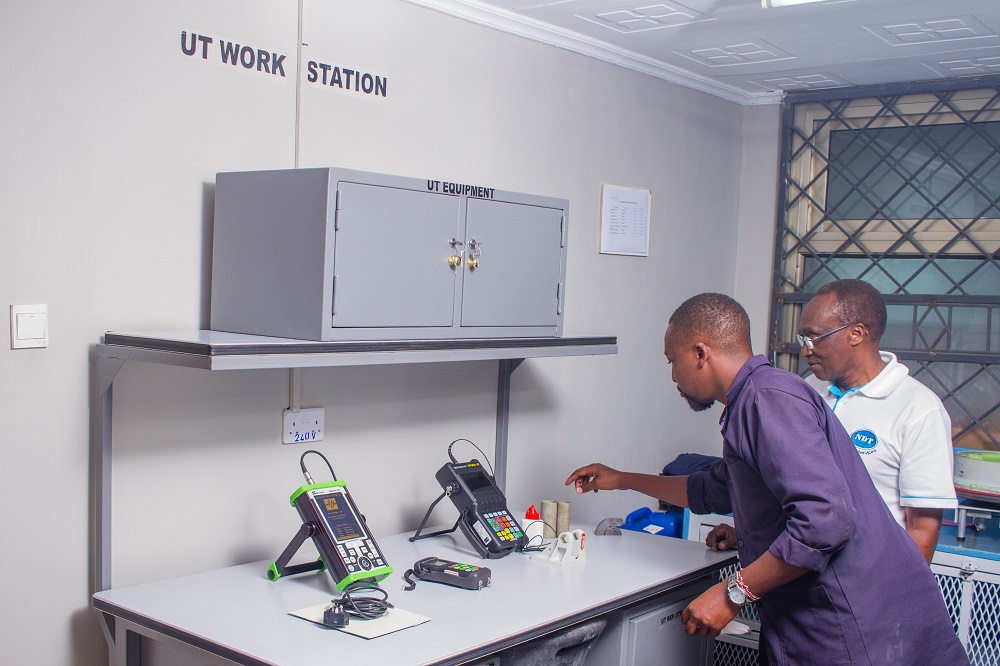UT Testing
Ultrasonic testing is one of the NDT methods whose principle is based on propagation of sound waves in a material under test. The sound is of very high frequency which cannot be detected by a human ear.
Sound energy is introduced and propagates through the materials in the form of waves. When there is a discontinuity (such as a crack) in the wave path, part of the energy will be reflected back from the flaw surface. The reflected wave signal is transformed into an electrical signal by the transducer and is displayed on a screen. The signal travel time is directly related to the distance the signal has traveled. From the signal, information about the reflector location, size, orientation and other features can be deduced. The main advantage of this method is that the applied sound can travel long distance hence discontinuities hidden deep into the material can be detected. The disadvantage of the method is that sound cannot travel through multilayers.

A bond tester being calibrated for the inspection of Dash 8 fuselage bonded panels. The panels require checking for bonding integrity at a pre-determined frequency. These type Panels are not riveted hence they require checking for proper bonding to prevent failure in a pressurized flight.

Calibrating for ultrasonic detection of cracks origination from fastener holes of a forging.

Calibrating thickness ultrasonic gauge for measurement of material loss due to corrosion occurring between wing skin and bottom spar cup.
ABOUT US
We are an NDT company approved by the Kenya Civil Aviation Authority www.kcaa.or.ke (KCAA) and Tanzania Civil Aviation Authority www.tcaa.go.tz (TCAA) as an AMO to offer specialized services of non-destructive testing in the aviation industry.

